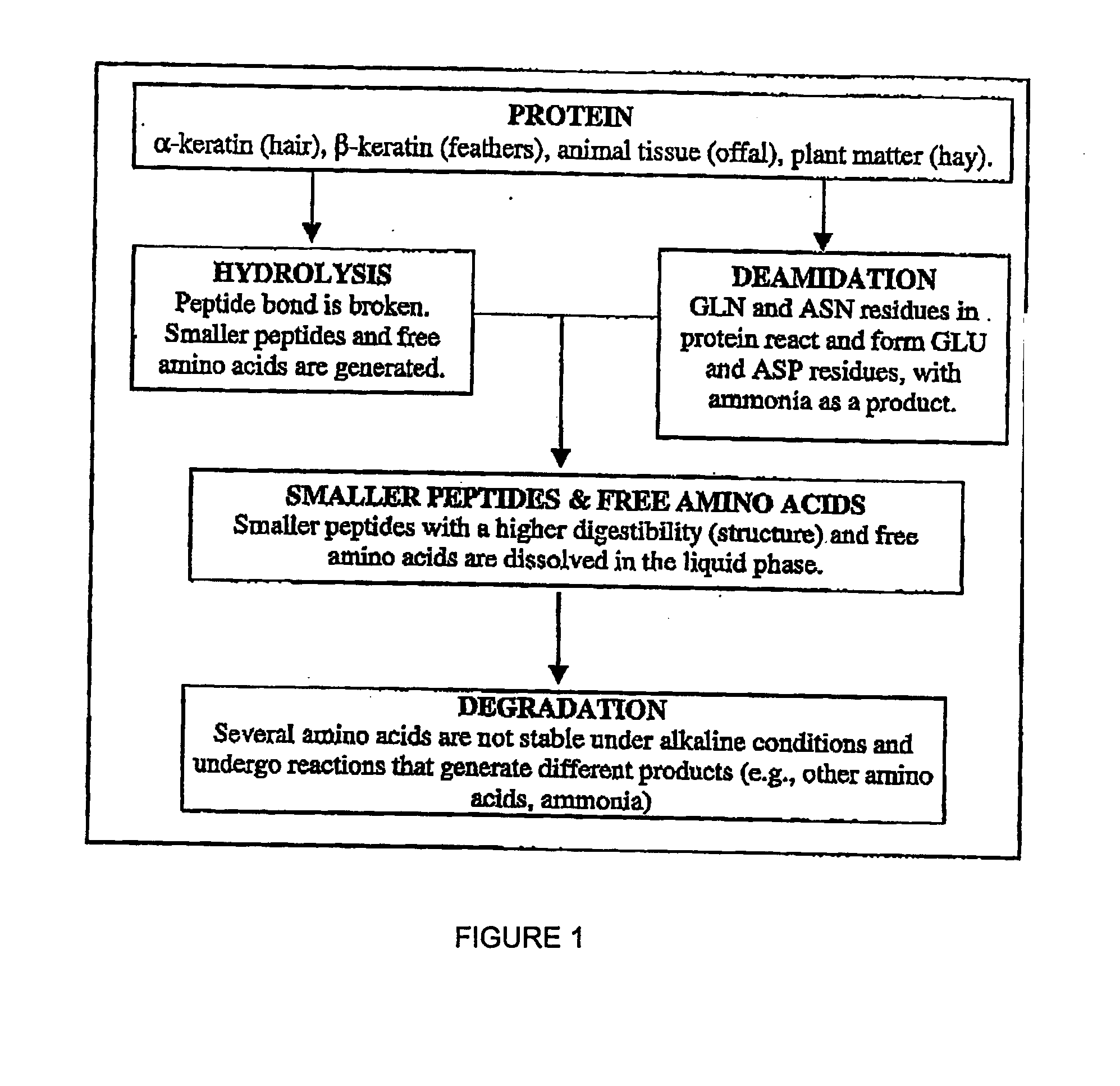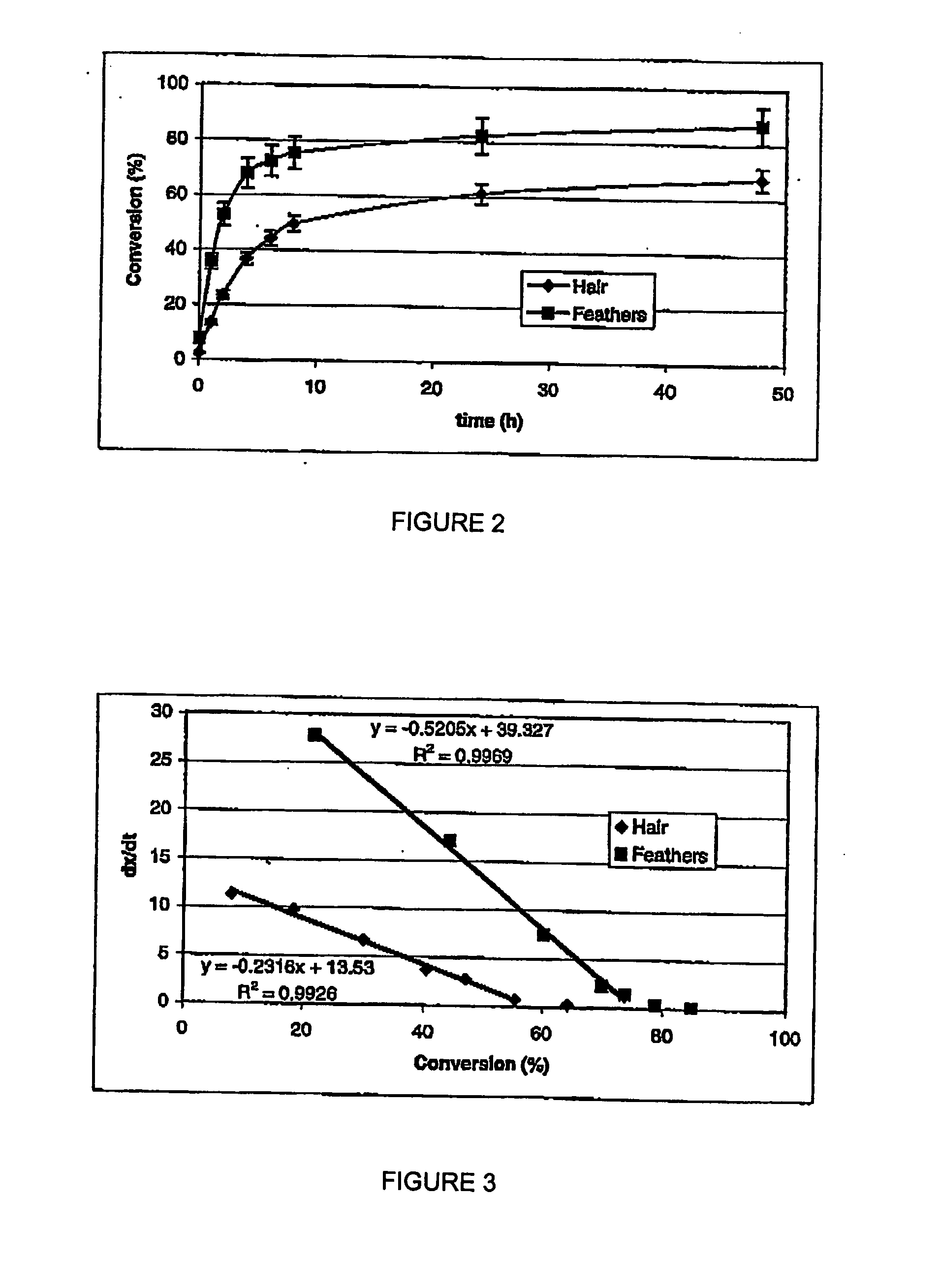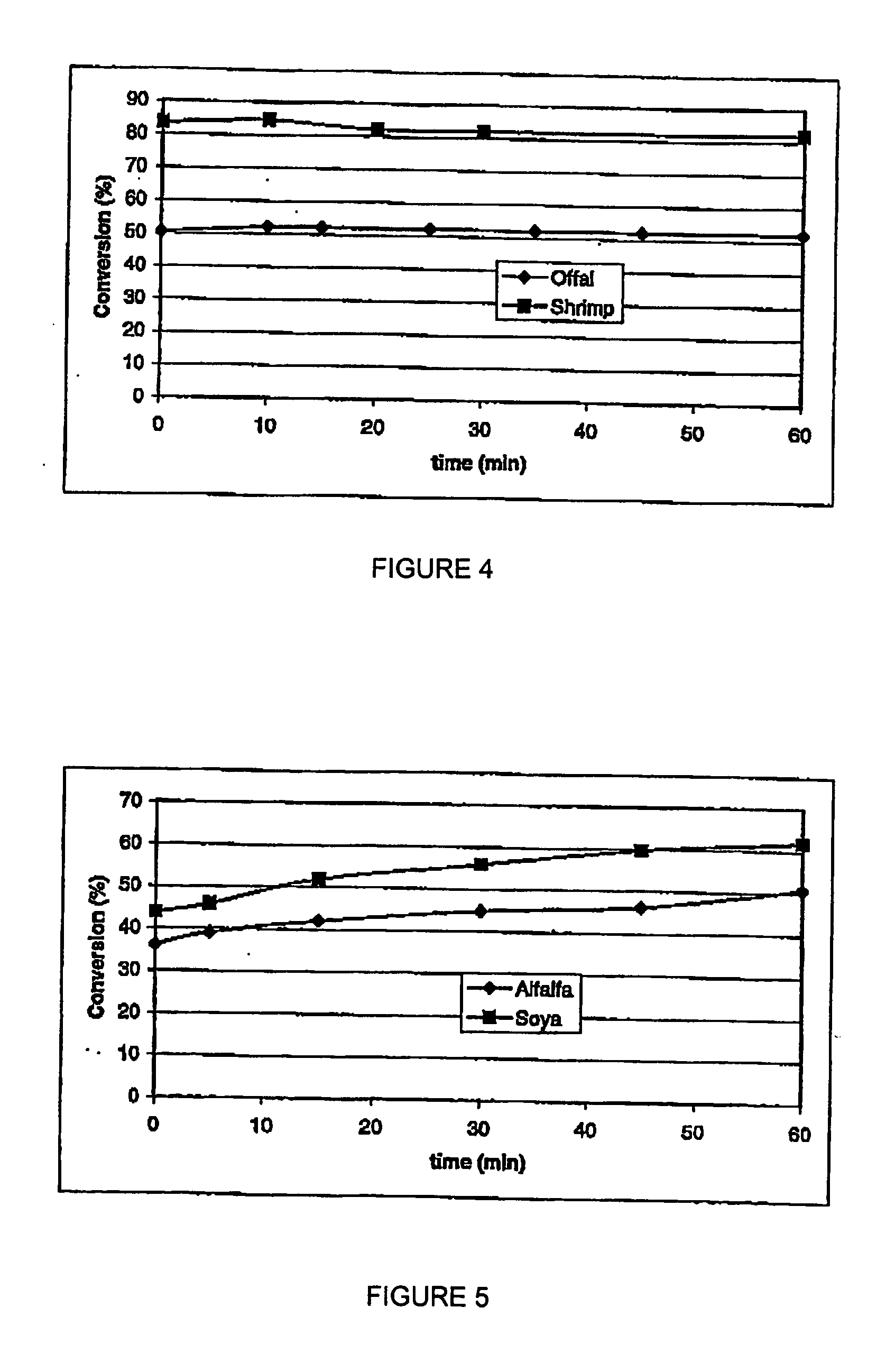Method and system for solubilizing protein
a solubilizing protein and protein technology, applied in the direction of peptides, peptide/protein ingredients, peptide sources, etc., can solve the problems of difficult to achieve the effect of solubilizing protein, high cost, and high cos
- Summary
- Abstract
- Description
- Claims
- Application Information
AI Technical Summary
Benefits of technology
Problems solved by technology
Method used
Image
Examples
example 1
General Methods and Equipment
[0146] The following general methods and equations were used in the present examples:
[0147] The concentration of the different compounds in the liquid product and in raw materials was determined by two different procedures: Amino acid composition was determined by HPLC measurements (performed by the Laboratory of Protein Chemistry of Texas A&M University); total Kjeldhal nitrogen and mineral determinations were performed by the Extension Soil, Water and Forage Testing Laboratory of Texas A&M University using standard methodologies.
[0148] Measurement of digestibility of lignocellulosic material was done by the 3-d digestibility test using the DNS method. Biomass was ground to an adequate size if necessary. A Thomas-Wiley laboratory mill with several sieve sizes located in the Forest Science Research Center was used.
[0149] Lignin, cellulose, hemicellulose (holocellulose), ash, and moisture content of materials were determined using NREL methods.
[0150]...
example 2
Protein Solubilization in Alfalfa Hay
[0156] Alfalfa hay is commonly used in ruminant nutrition. Higher feed digestibility ensures that animal requirements will be satisfied with less feed. Treatment of alfalfa hay generates two separate products: a highly digestible soluble fraction found in the liquid product, and a delignified residual solid.
[0157] Alfalfa hay was treated with calcium hydroxide, the least expensive base on the market. In Table 3, the composition of alfalfa in different states is summarized.
TABLE 3Composition of alfalfa in its different states (McDonald et al., 1995)AlfalfaCrudeHemi-(% of dry mass)SolubleproteinLigninCellulosecelluloseFresh early bloom60197232.9Mid bloom5418.39262.6Full bloom481410272.1Hay, sun-cured,58188242.7early bloomMid bloom54179262.6Late bloom481412262.2Mature bloom4212.914292.2
[0158] Sun-cured alfalfa hay was obtained from the Producers Cooperative in Bryan, Tex.; then it was ground using a Thomas-Wiley laboratory mill (Arthur H. Thomas...
example 3
Protein Solubilization in Soybean Hay
[0206] Soybeans are normally harvested for the generation of several food products. During the harvesting process, an unused waste product is generated in large quantities.
[0207] Additionally, some special weather conditions (e.g. long dry season, long rainy season) hamper soybean growth. A low crop yield directs the soybean harvest to the generation of animal feed (soybean hay), instead of the food industry.
[0208] Treatment of soybean hay will generate two separate products: a highly digestible soluble fraction and a delignified residual solid. The higher feed digestibility ensures that animal requirements will be satisfied with less feed.
[0209] Sun-cured soybean hay (i.e., leaves, stems, and beans of mowed soybean plants) was obtained from Terrabon Company; then it was ground using a Thomas-Wiley laboratory mill (Arthur H. Thomas Company, Philadelphia, P A) and sieved through a 40-mesh screen. The moisture content, the total nitrogen (estim...
PUM
| Property | Measurement | Unit |
|---|---|---|
| temperature | aaaaa | aaaaa |
| temperatures | aaaaa | aaaaa |
| solubility | aaaaa | aaaaa |
Abstract
Description
Claims
Application Information
 Login to View More
Login to View More - R&D
- Intellectual Property
- Life Sciences
- Materials
- Tech Scout
- Unparalleled Data Quality
- Higher Quality Content
- 60% Fewer Hallucinations
Browse by: Latest US Patents, China's latest patents, Technical Efficacy Thesaurus, Application Domain, Technology Topic, Popular Technical Reports.
© 2025 PatSnap. All rights reserved.Legal|Privacy policy|Modern Slavery Act Transparency Statement|Sitemap|About US| Contact US: help@patsnap.com



